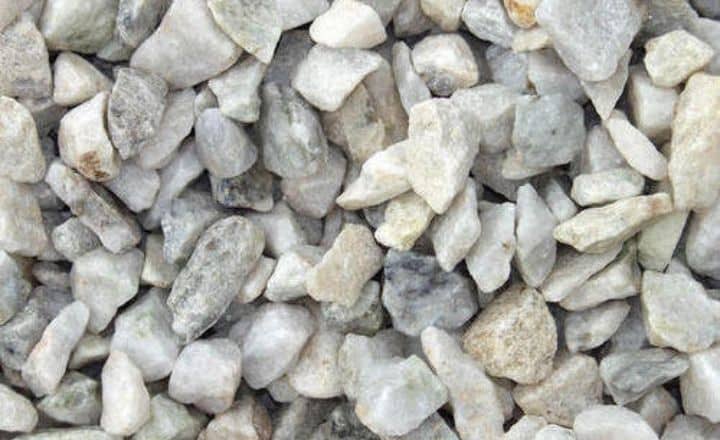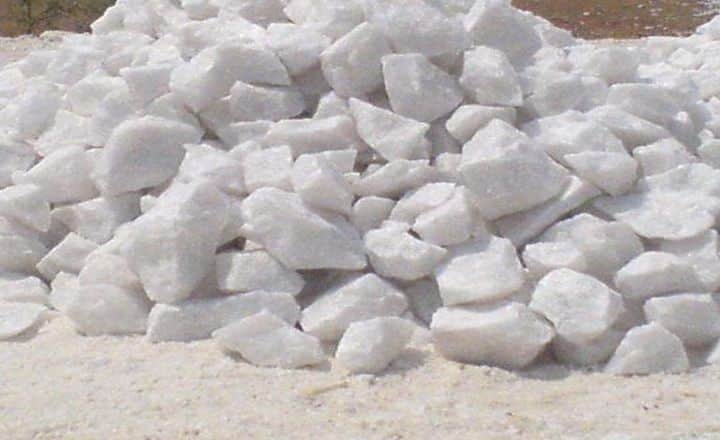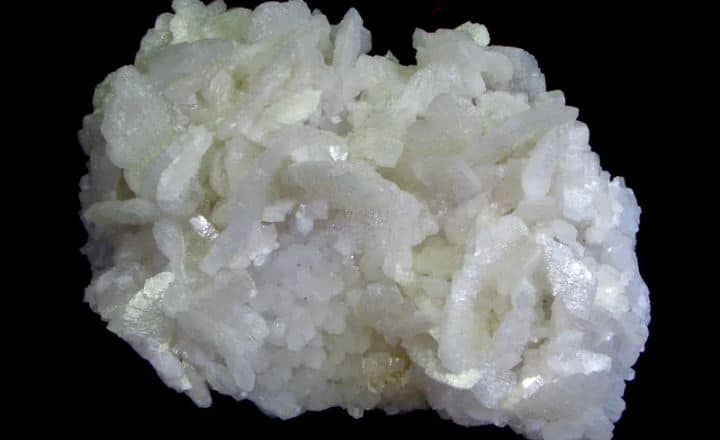What is Dolomite?
Dolomite, a sedimentary carbonate mineral composed of calcium magnesium carbonate (CaMg(CO₃)₂), stands as one of Earth’s significant rock-forming minerals. This remarkable mineral, named after the French mineralogist Déodat Gratet de Dolomieu, forms vast deposits known as dolostone or dolomite rock. Its formation process, known as dolomitization, occurs when limestone or lime mud reacts with magnesium-rich groundwater, creating a distinct mineral structure different from its calcium carbonate parent material.
The geological history of dolomite formation remains a subject of scientific interest, often referred to as the “dolomite problem.” While modern dolomite formation is relatively rare, extensive ancient deposits suggest different environmental conditions existed during earlier geological periods. These deposits, found worldwide, represent important economic resources and provide valuable insights into Earth’s past environmental conditions.
Uses of Dolomite

Construction and Industrial Applications

The construction industry represents one of the largest consumers of dolomite products. Crushed dolomite serves as an excellent aggregate in concrete production, road construction, and railway ballast. Its durability and compression strength make it particularly valuable in infrastructure projects requiring long-term stability and weather resistance.
In the steel industry, dolomite plays a crucial role as a flux material in blast furnaces, helping remove impurities and extend furnace lifespan. The glass and ceramics industries utilize high-purity dolomite as a source of magnesium oxide and calcium oxide, essential components in their manufacturing processes. Agricultural applications benefit from dolomitic lime, which provides both calcium and magnesium to improve soil conditions and crop yields.
Specialized Applications
Modern industrial processes increasingly rely on dolomite in specialized applications. The chemical industry uses dolomite as a source of magnesium compounds, while environmental applications include water treatment and acid neutralization. In hydrometallurgy, dolomite serves as a pH regulator and precipitating agent, demonstrating its versatility in technical applications.
The mineral’s use extends to the manufacture of magnesium metal, refractory materials, and various chemical products. Its natural properties make it valuable in environmental remediation projects, particularly in treating acidic soils and water bodies. These diverse applications highlight dolomite’s importance in both traditional and emerging industrial sectors.
Properties of Dolomite
Physical Characteristics

Natural dolomite exhibits distinct physical properties that contribute to its industrial value. Its hardness (3.5-4 on the Mohs scale) and specific gravity make it suitable for various construction applications. The mineral’s characteristic rhombohedral crystal structure influences its behavior in industrial processes and contributes to its durability in construction applications.
Chemical Properties
The chemical composition of dolomite, combining calcium and magnesium carbonates, provides unique advantages in various applications. Its thermal decomposition behavior, producing separate oxides at different temperatures, enables selective processing for specific industrial uses. The mineral’s resistance to acid attack, while lower than limestone, proves beneficial in certain applications requiring controlled dissolution rates.
Dolomite Mining
Global Production
Dolomite mining operations occur worldwide, with significant deposits found across multiple continents. Major producing regions include Europe, North America, and Asia, each contributing to the global supply chain. The mining industry distinguishes between different grades of dolomite based on chemical composition and physical properties, serving various market segments.

Extraction and Processing
Modern dolomite extraction typically involves open-pit mining methods, though some underground operations exist in specific geological settings. The mining process begins with careful exploration and grade control to ensure consistent product quality. Once extracted, the material undergoes crushing, screening, and classification to produce various sized products for different applications.
Processing facilities employ modern technology to maintain product quality and meet specific market requirements. Advanced processing methods, including selective mining and beneficiation, help achieve the required chemical and physical specifications for different applications. Quality control measures throughout the production chain ensure consistent product characteristics.
Environmental Impact of Dolomite Mining
Sustainable Mining Practices
The dolomite mining industry increasingly embraces sustainable practices to minimize environmental impact. Modern operations implement comprehensive environmental management systems addressing dust control, water management, and energy efficiency. These initiatives reflect growing awareness of environmental responsibility while maintaining productive operations.
Environmental Management
Environmental protection measures form an integral part of modern dolomite mining operations. Companies actively manage water resources through recycling programs and sophisticated water treatment systems. Dust suppression technologies help maintain air quality around mining sites, while careful planning ensures minimal disruption to local ecosystems.
Rehabilitation Efforts
Land reclamation represents a crucial aspect of responsible dolomite mining. Mining companies implement progressive rehabilitation strategies, restoring mined areas to productive use through careful soil management and revegetation efforts. These programs help preserve biodiversity and maintain ecological balance in mining regions while providing opportunities for future land use.
Conclusion
Dolomite continues to demonstrate its fundamental importance across numerous industries and applications. From construction materials to specialized industrial processes, this versatile mineral remains essential to modern economic development. Ongoing research and technological advancement continue to uncover new applications while improving existing processes.
The future of dolomite mining and processing looks promising, driven by infrastructure development and industrial growth. Sustainable production practices and environmental consciousness increasingly shape industry operations, ensuring responsible resource development for future generations. The balance between meeting industrial needs and environmental protection remains a key focus for the industry.
As global development continues, dolomite’s role in various applications will likely expand further. The industry’s commitment to innovation, quality control, and environmental responsibility positions this timeless mineral for continued importance in global commerce and industry. Through careful management and sustainable practices, dolomite mining and processing will continue to provide essential materials for diverse applications while preserving environmental integrity.
This enduring mineral, formed through ancient geological processes, remains vital to modern civilization while adapting to contemporary environmental and technological challenges. Its continued importance underscores the need for responsible resource management and sustainable development practices in the mining industry.
